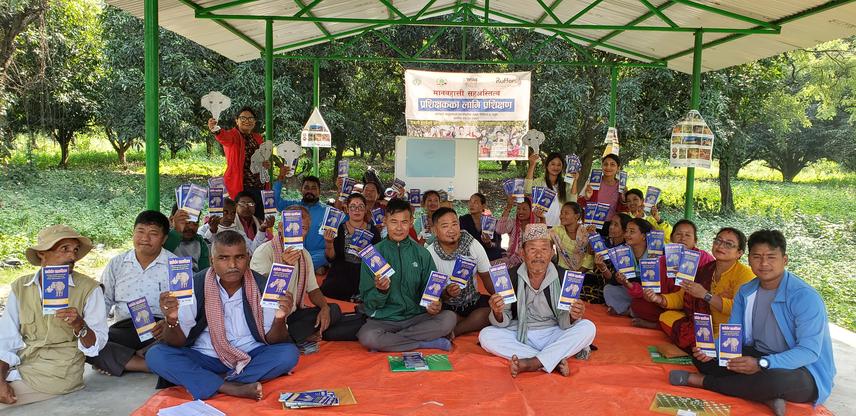Rama Mishra
Other projects
17 Sep 2014
Conflict to Coexistence: Training Locals to Save Themselves and the Elephants in Chitwan
26 Apr 2016
Develop Human Elephant Coexistence through Training and Awareness Programs to Locals Community in Central Nepal
4 Oct 2019
Assess Human-Elephant Conflict and Develop Human-Elephant Coexistence Through Community Awareness in Eastern Nepal
In Nepal, over 200 wild elephants are confined to a narrow strip of fragmented Siwalik/Terai forests, divided into four subpopulations. One key subpopulation resides in the central Terai region, spanning Chitwan, Parsa, Bara and Dhanusha districts. This area is densely populated, and over centuries, forest encroachment and land conversion have reduced elephant habitats and disrupted traditional migration routes.

Group photo with Training of Trainers (ToT) participants at Dhanusha district © Rama Mishra.
While protected areas like Chitwan and Parsa National Parks offer some safety, elephants require vast territories and often roam beyond these zones, frequently crossing large areas of central Terai (Provinces 2 and 3). Outside protected areas, elephants are increasingly vulnerable to human-induced threats, especially conflicts with people. Human-elephant conflict (HEC) is more common in areas outside protected zones, particularly along forest fringes where marginalized communities with limited awareness of elephant behavior live. Many incidents of elephant attacks can be attributed to human actions, which could be avoided through better education and awareness.
This project aims to scale up awareness programs in the central Terai (Chitwan, Parsa, Bara and Dhanusha districts), refreshing local knowledge of elephant behavior and fostering better human-elephant coexistence. By doing so, we hope to reduce conflicts and promote harmonious living between elephants and local communities.